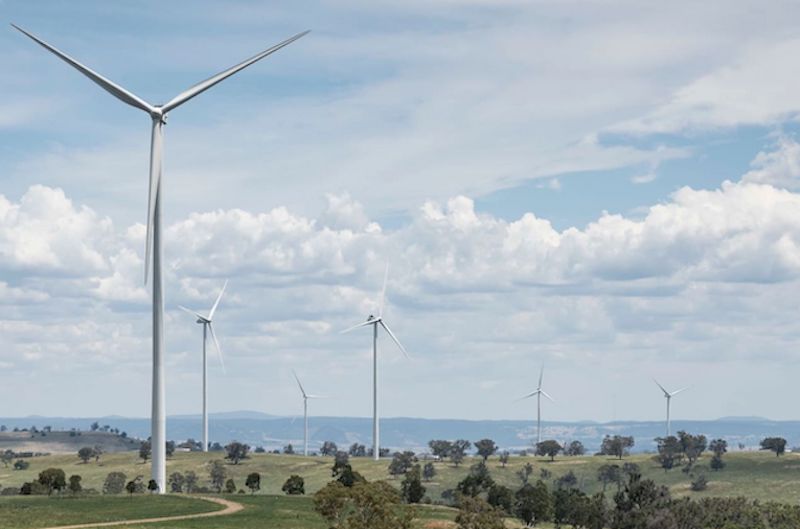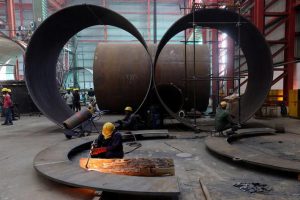A record $627 billion of solar energy and other sustainable infrastructure projects were announced around the world in 2021, but progress on building the 1,521 projects – and those announced in previous years – has been slow, according to a report by Refinitiv released on Monday.
“Despite steady growth in investment, many big projects have been sidelined by a crippling combination of pandemic-related project delays, supply chain issues, geopolitical tensions and inflationary pressures,” the report, titled Potholes on the Road to Sustainable Infrastructure, said.
“Of the 1,232 solar and wind projects, worth some $275 billion, announced in 2020, just 47 (3.8%) have been completed,” it said. “Likewise, among the 1,069 solar and wind projects announced in 2019, just 89 (8.3%) have been completed.”
The Covid-19 pandemic, supply chain issues, plus impacts from Russia’s war in Ukraine, have had major impacts on what should be golden days of sustainable infrastructure, the report said.
“Between the Biden administration’s big budget plan to rebuild the US while shifting to cleaner energy sources, the EU’s Green Deal, with its ambitious goal of growth decoupled from resource use, and a global mandate toward sustainable investing, we might have expected to see more visible evidence of the transformation everyone’s been talking about for the last several years,” the report said.
And, while the number of size of sustainable infrastructure projects has shot up, there have been notable headwinds – an increasingly fraught geopolitical environment that could create access challenges for critical natural resources, plus “countless project delays and budget overruns caused by the pandemic, supply chain issues and a volatile economic environment.”
ALSO SEE: China Mobilises Banks to Battle Widening Mortgage Boycott
‘Horribly Wrong’
A high-profile example of these challenges, it said, is Siemens Gamesa, the world’s largest wind turbine manufacturer, which reported a 20% decline in first quarter 2022 revenues “largely due to ramp-up challenges caused by supply chain interruptions.” Eventually, these delays and missed opportunities cut the market value of the company by half and led to the untimely exit of its chief executive.
Rod Morrison, the editor of Project Finance International, was quoted as saying: “Many big projects have gone horribly wrong.”
While mergers and aquisitions were “roaring ahead” and lots of new projects were being announced, there were also “countless examples where projects are delayed midstream due to Covid and supply chain issues,” Morrison said, adding that things were “considerably more ominous” when the rising price of commodities and oil and gas were factored in.
Oil and gas prices complicated matters because developers of big long-term energy projects often hedge out their price risk. The war in Ukraine raised questions about the viability of alternative fuel strategies that require large amounts of nickel, cobalt, copper and resources “heavily sourced from Russia,” Morrison said.
Ukraine was also believed to have lithium deposits which, although they were largely untapped, had drawn world attention and may have been a factor in Russia’s invasion.
Metals and Minerals Challenge
“We will not successfully transition to renewables and electrify the economy if we do not solve the metals and minerals challenge,” Alessandro Sanos, global director of sales strategy for commodities at Refinitiv, said in the report.
“Simply put, we do not have enough supply of metals and minerals to meet the insatiable and growing demand needed to achieve the transition targets specified by the Paris Agreement and COP26.”
Exploring, developing and delivering new mines takes several decades, Sanos said, and increasingly stringent environmental policies on mining would be another “bump” on the road to emission reduction goals.
Countries were rushing to construct alternate energy projects to make up for a shortfall in existing energy supplies, part of which had been caused by the war in Ukraine, the report said.
Huge Investor Interest
Investor interest in sustainable infrastructure had grown so rapidly it was “fundamentally changing the underlying market structure in global capital markets,” Claire Dorrian, Head of Sustainable Finance, Capital Markets at the London Stock Exchange Group, said.
“The green economy all by itself is the fifth largest industry in the world right now,” Dorrian said. “Accordingly, we’ve seen widespread growth in new funds focused on everything from renewable energy to digital infrastructure assets.”
London had seen a boom in listed green funds (33) and renewable energy infrastructure funds (22), which were now worth a combined total of 45 billion pounds (nearly $54 billion).
That was why the London Stock Exchange Group was planning to develop a voluntary carbon market “to eventually allow a market-based approach for investment in activities that reduce and remove global carbon emissions.”
Hardly surprisingly, the report described the current global scenario as a “powder keg of opportunity and risk.”
- Jim Pollard
ALSO on AF:
BP Buys 40% of $30bn Asia Renewable Energy Project
China Planning Agency Aims For 33% Renewable Power by 2025
Samsung to Take Green Power Pledge in Shift to Renewable Energy
Vietnam Plans Renewable Energy Projects to Reduce Coal Use
























